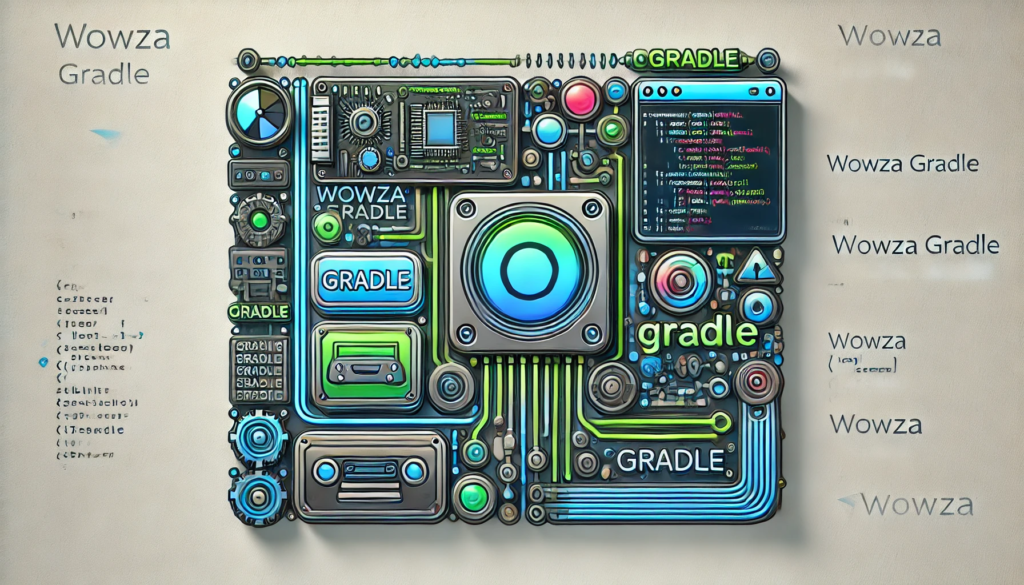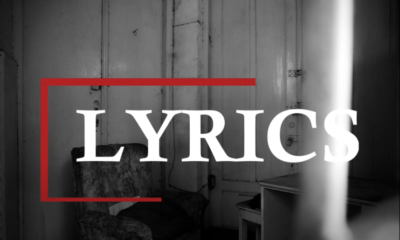Technology
Wowza Gradle Explained: Build Tools for Efficient Streaming Solutions

In today’s fast-paced digital world, efficient streaming solutions aren’t just nice-to-have – they’re essential. Whether you’re a developer building the next big streaming platform or a tech lead optimizing existing systems, mastering Wowza Gradle can be the difference between a clunky setup and a streamlined operation that scales effortlessly.
Let’s dive into the world of Wowza Gradle, exploring everything from basic setup to advanced configurations. We’ll guide you through six crucial aspects that will transform how you approach streaming builds, starting with the fundamental concepts and moving all the way to optimization techniques that the pros use. 🎯
Understanding Wowza Gradle Basics
Core Components and Architecture

Wowza Gradle serves as a powerful build automation tool specifically designed for streaming applications. Its core architecture consists of three main components: the build script processor, dependency manager, and task executor, working seamlessly to streamline the development workflow for streaming solutions.
Key Features for Streaming Applications
- Real-time compilation support
- Dynamic asset processing
- Automated dependency resolution
- Custom task creation capabilities
| Feature | Benefit |
|---|---|
| Incremental builds | Faster development cycles |
| Plugin ecosystem | Extended functionality |
| Maven compatibility | Broader dependency options |
Setting Up Your Build Environment
To begin your Wowza Gradle journey, ensure your system meets the minimum requirements: Java 8 or higher, Gradle 6.x or later, and at least 4GB RAM. The Wowza Gradle plugin requires a valid Wowza Streaming Engine license and compatible IDE like IntelliJ IDEA or Eclipse.
Installing the Wowza Gradle plugin is straightforward through the build.gradle file. Add the plugin ID ‘com.wowza.gradle’ to your plugins block and configure the basic settings, including streaming engine version and deployment parameters. Remember to verify version compatibility between your Gradle installation and Wowza components.
- System Requirements:
- Java 8+
- Gradle 6.x+
- 4GB RAM
- Valid license
| Component | Minimum Version | Recommended Version |
|---|---|---|
| Java | 8 | 11 |
| Gradle | 6.x | 7.x |
| IDE | Any | IntelliJ IDEA |
Essential Build Tasks for Streaming

Media streaming requires precise configuration of build tasks to ensure optimal performance. Start by defining stream processing parameters in your build.gradle file, including transcoding settings and adaptive bitrate configurations. Then, manage dependencies through Gradle’s dependency management system, ensuring all required streaming libraries are properly versioned.
- Key streaming build tasks:
- Stream transcoding configuration
- Bitrate adaptation settings
- Codec management
- Buffer size optimization
| Task Type | Configuration Priority | Impact Level |
|---|---|---|
| Transcoding | High | Critical |
| Dependencies | Medium | Essential |
| Asset Management | Medium | Important |
| Deployment | High | Critical |
Advanced Gradle Configurations
Custom Build Scripts
Custom build scripts in Wowza Gradle enable specialized streaming configurations through task automation and plugin development. Create tailored build processes by defining custom tasks in your build.gradle file, incorporating streaming-specific dependencies and configurations.
Multi-project Setups & Security Implementations
Multi-project architecture allows modular streaming applications with shared dependencies across subprojects. Implement security measures by encrypting sensitive credentials in gradle.properties and utilizing environment variables for secure deployment pipelines.
| Configuration Type | Use Case | Complexity |
|---|---|---|
| Custom Scripts | Task Automation | Medium |
| Multi-project | Modular Apps | High |
| Security | Credential Management | High |

Optimization Techniques
Build Speed Improvements and Resource Management
Implementing parallel task execution and incremental builds can significantly reduce build times in Wowza Gradle projects. Configure the Gradle daemon to maintain build process memory and enable build caching to skip redundant tasks. Resource management involves setting appropriate worker counts and allocating memory based on server capacity.
Caching Strategies and Memory Allocation
- Build cache configuration
- Shared cache setup
- Memory settings optimization
- JVM heap size adjustment
| Optimization Area | Recommended Setting |
|---|---|
| Parallel Tasks | 4-8 workers |
| Heap Size | 2-4GB initial |
| Cache Storage | 10GB minimum |
Troubleshooting and Best Practices
When encountering Wowza Gradle build issues, start by checking the gradle.properties file for correct streaming configurations and memory allocations. Common problems include missing dependencies, incorrect plugin versions, and Java compatibility issues. Enable Gradle’s debug mode using ‘–debug’ flag for detailed logging and error tracking.
Performance bottlenecks often stem from excessive task configurations or unnecessary plugin applications. Implement parallel execution where possible, use build caching, and regularly clean your build directory. For optimal results:
- Enable daemon processes
- Configure incremental builds
- Minimize dependency resolution
- Use version catalogs
| Issue Type | Debug Command | Purpose |
|---|---|---|
| Build Errors | gradle clean build --debug | Detailed logging |
| Performance | gradle --scan | Build performance data |
| Dependencies | gradle dependencies | Dependency tree check |
Mastering Wowza Gradle empowers developers to create robust, scalable streaming solutions through streamlined build processes. From basic setup to advanced configurations, these build tools provide the foundation for efficient media delivery while ensuring optimal performance and reliability.
Take the next step in your streaming development journey by implementing these Gradle best practices. Start with the essential build tasks, gradually incorporate advanced configurations, and regularly optimize your build process. Remember, a well-structured Gradle setup isn’t just about building code – it’s about delivering seamless streaming experiences to your users.
FAQs
- What is Wowza Gradle, and why is it important for streaming applications?
Wowza Gradle is a build automation tool designed for streaming applications. It simplifies the development and deployment processes by managing dependencies, automating build tasks, and optimizing configurations, ensuring smooth and efficient media delivery. - What are the system requirements for using Wowza Gradle?
- Java Version: Java 8 or higher (recommended: Java 11)
- Gradle Version: Gradle 6.x or later (recommended: Gradle 7.x)
- RAM: Minimum 4GB
- License: Valid Wowza Streaming Engine license
- IDE: Any IDE, with IntelliJ IDEA recommended for better compatibility.
- How does Wowza Gradle improve build performance?
Wowza Gradle enhances build performance through incremental builds, parallel task execution, and build caching. It also allows developers to optimize memory allocation and configure the Gradle daemon for better resource management. - Can I use Wowza Gradle for multi-project setups?
Yes, Wowza Gradle supports multi-project setups, enabling modular streaming application development. Shared dependencies and configurations across subprojects streamline development and simplify updates. - What are the best practices for troubleshooting Wowza Gradle build issues?
- Use the
--debugflag to enable detailed logging. - Verify the
gradle.propertiesfile for correct settings. - Ensure compatibility between plugin versions, dependencies, and Java versions.
- Regularly clean the build directory and use Gradle’s performance scan tool (
gradle --scan) to identify bottlenecks.
- Use the
Visit for more: Buzzark
-

 Celebrity7 months ago
Celebrity7 months agoMichael C. Hall: Complex Journey of a Versatile Actor
-

 Business7 months ago
Business7 months agoUnderstanding Apostille UK: A Comprehensive Guide
-

 Technology7 months ago
Technology7 months agoThe Future of Video Marketing: Trends You Can’t Ignore
-

 Celebrity8 months ago
Celebrity8 months agoShane Urban Explained: Facts About Keith Urban’s Sibling
-

 Celebrity8 months ago
Celebrity8 months agoAnuel AA Height and Weight? Everything Age, Bio, Family, and More
-

 Celebrity8 months ago
Celebrity8 months agoWho is Heidi Berry Henderson? Everything About Halle Berry’s Sister
-

 Celebrity8 months ago
Celebrity8 months agoThe Life of Lorenzo Luaces: Lili Estefan’s Ex-Husband Explained
-

 Celebrity9 months ago
Celebrity9 months agoOtelia Cox, Bio Tony Cox’s Wife, Her Age, Height, and Life Journey
-

 Celebrity8 months ago
Celebrity8 months agoian cylenz lee: Bio, net worth, age, family and more Kandyse McClure’s husband
-

 Entertainment9 months ago
Entertainment9 months agoEverything About ‘Oche Oche Anasico’ Lyrics: Meaning, Origin & More
-

 Celebrity8 months ago
Celebrity8 months agoWho is Carolin Bacic? A Deep Dive into Steve Bacic’s Wife
-

 Fashion7 months ago
Fashion7 months agoThe Perfect Pairing: Corset Prom Dresses for a Flattering Fit and Beaver Hat Blanks for Timeless Style






























